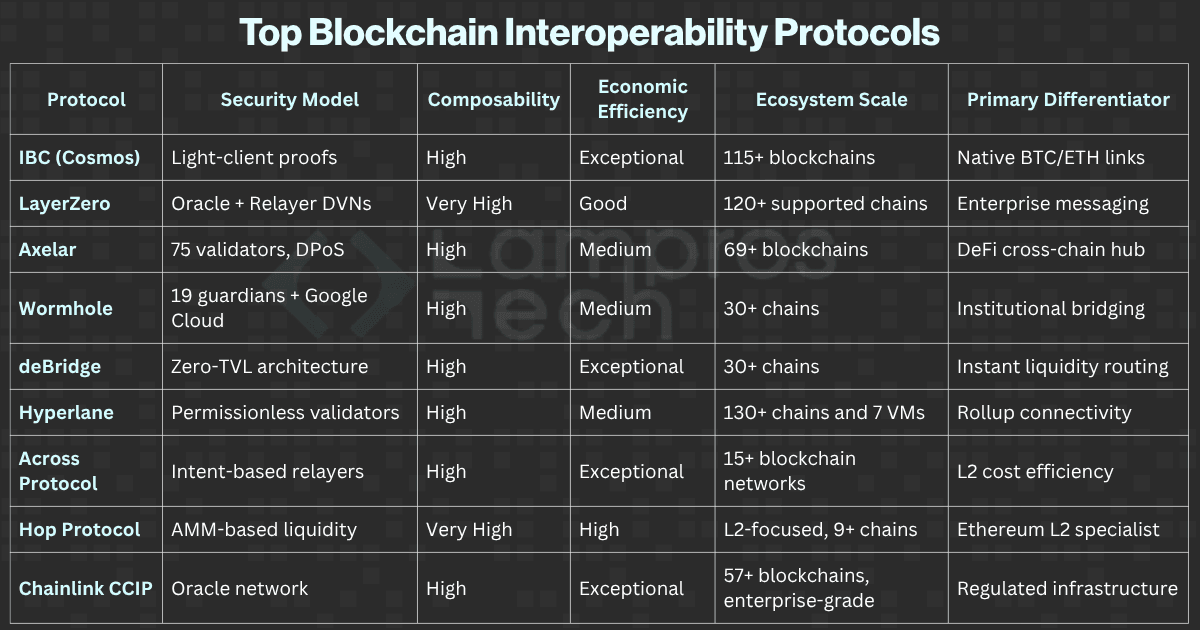Contact Us
If you're working on something real — let's talk.
Development & Integration
Blockchain Infrastructure & Tools
Ecosystem Growth & Support
© 2025 Lampros Tech. All Rights Reserved.
Published On Oct 15, 2025
Updated On Oct 15, 2025



Growth Lead
FAQs

Blockchain interoperability refers to the ability of different blockchains to exchange data, assets, and logic seamlessly.In 2025, it has evolved from simple token bridges to programmable infrastructure that enables cross-chain applications, shared liquidity, and multi-network governance. This capability is now critical for scaling Web3 ecosystems, improving capital efficiency, and integrating institutional use cases.

Traditional bridges primarily move tokens between chains, often relying on custodial or centralized validators.Interoperability protocols, by contrast, are built as infrastructure layers that verify cross-chain communication cryptographically or through decentralized validator networks. They support richer use cases such as cross-chain smart contracts, message passing, and multi-chain data synchronization.

The leading interoperability protocols in 2025 fall into four core models:
Each model balances different trade-offs between security, decentralization, and scalability.

Based on 2025 performance metrics, ten protocols stand out for their maturity and adoption:IBC (Cosmos), LayerZero, Chainlink CCIP, Axelar, Wormhole, Polkadot XCM, deBridge, Hyperlane, Across, and Hop Protocol.Each occupies a unique position from IBC’s sovereign connectivity to LayerZero’s omnichain messaging and Chainlink CCIP’s enterprise-grade compliance.

The next phase will focus on convergence and standardization rather than expansion. Key trends include: